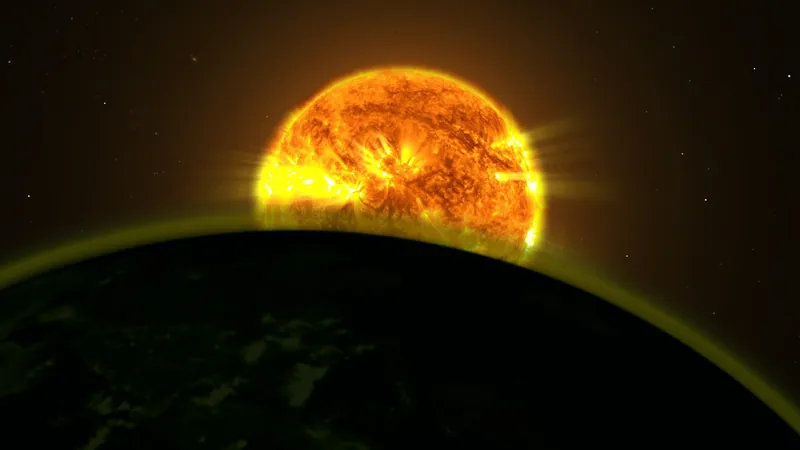
Lab-Created Biosignatures Could Mislead the Search for Extraterrestrial Life
2024-09-25
Introduction
The quest for life beyond Earth continues to captivate scientists and enthusiasts alike, particularly through the intriguing concept of biosignatures. These are chemical indicators within a planet's atmosphere that hint at the presence of life. Traditionally, scientists have relied on the analysis of atmospheric spectra to identify these biosignatures, hoping to find spectral patterns of molecules exclusively produced by biological processes. However, this quest is fraught with complications.
The Challenge of Biosignatures
It is important to note that common molecules such as water and oxygen, while prevalent in Earth's atmosphere thanks to living organisms, can also arise from non-biological processes. This leads to a significant challenge: discerning when these substances genuinely indicate life or are simply byproducts of geological activity. Recent research has shed light on this conundrum, indicating that even some well-established biosignatures may not originate from living organisms.
Complex Molecules and Their Implications
For instance, astronomers have long hoped to detect complex molecules like chlorophyll as unequivocal evidence of life. However, such compounds are rare in planetary atmospheres and, even if detected, their complex spectral patterns can be difficult to interpret. Consequently, researchers often pivot towards simpler yet unique molecules as potential indicators. One example is dimethyl sulfide (DMS), a compound primarily produced by Earth’s phytoplankton and considered a solid biosignature candidate.
Laboratory Findings on DMS
In a groundbreaking study, researchers successfully synthesized DMS and other sulfur-based molecules in the laboratory without the involvement of biological processes. While this laboratory achievement doesn’t prove that the same reactions could naturally occur on extraterrestrial bodies, it does suggest a potential pathway for synthesizing DMS on planets with dense organic haze—similar to what exists on Titan, Saturn’s enigmatic moon. If Titan were placed closer to our Sun, its exposure to ultraviolet radiation could trigger chemical reactions to produce DMS, leading to the false impression of biological life in its atmosphere.
The Implications of Exotic Life
Despite the harsh conditions on Titan that make it inhospitable to life as we understand it, researchers point to the possibility of exotic, unknown forms of life existing there. This revelation highlights a crucial takeaway from the study: the mere presence of DMS or similar molecules does not guarantee the existence of life but does hint at a higher likelihood of its potential. Essentially, planets enveloped in rich organic hazes may possess the complex organic compounds necessary for life’s emergence.
Conclusion
The implications of this research are profound and remind us that identifying biosignatures is not a straightforward task. Instead of expecting a miraculous discovery of life in a single watershed moment, scientists anticipate that evidence will gradually accumulate, revealing several exoplanets with chemical markers indicative of life. As these biomarkers are identified and studied, our confidence in the existence of life beyond Earth will increase, offering a tantalizing glimpse into the cosmos where the potential for alien life may be hidden among the stars. In conclusion, while the search for extraterrestrial life moves forward, the scientific community must tread carefully. The complexity of discerning genuine biosignatures from laboratory-created mimics emphasizes the need for continuing research and exploration. What future revelations will our evolving understanding of life beyond our planet uncover? Keep your eyes on the skies – the mystery of the universe may hold answers we’ve yet to imagine!


 Brasil (PT)
Brasil (PT)
 Canada (EN)
Canada (EN)
 Chile (ES)
Chile (ES)
 España (ES)
España (ES)
 France (FR)
France (FR)
 Hong Kong (EN)
Hong Kong (EN)
 Italia (IT)
Italia (IT)
 日本 (JA)
日本 (JA)
 Magyarország (HU)
Magyarország (HU)
 Norge (NO)
Norge (NO)
 Polska (PL)
Polska (PL)
 Schweiz (DE)
Schweiz (DE)
 Singapore (EN)
Singapore (EN)
 Sverige (SV)
Sverige (SV)
 Suomi (FI)
Suomi (FI)
 Türkiye (TR)
Türkiye (TR)